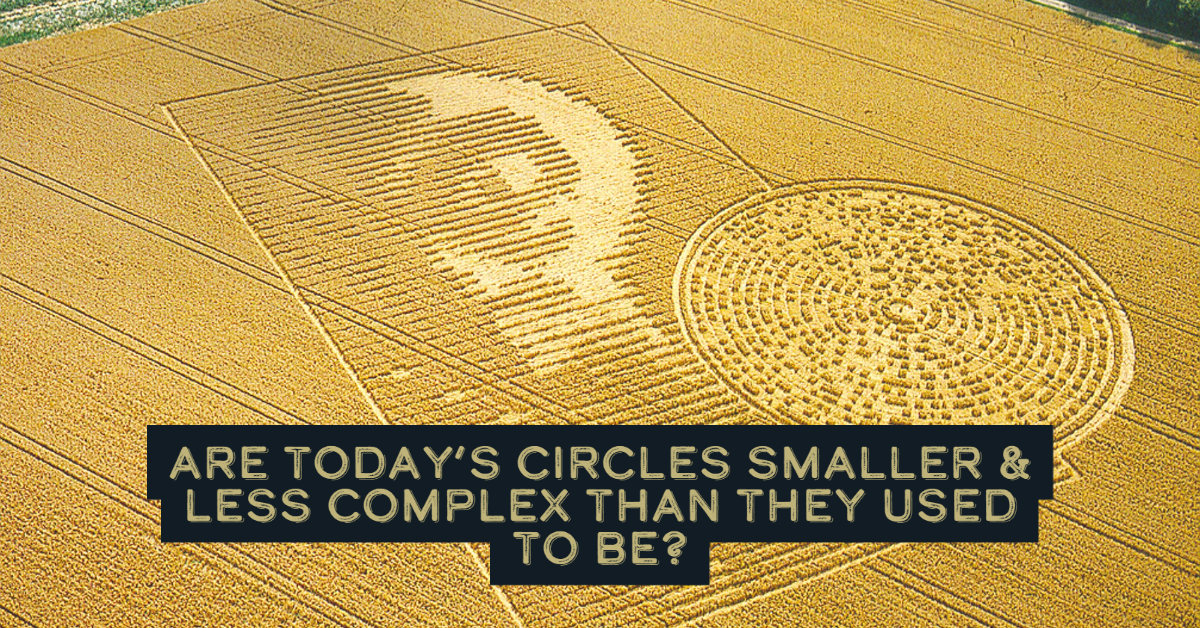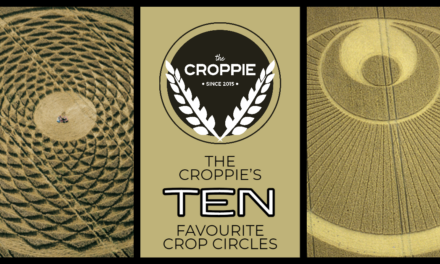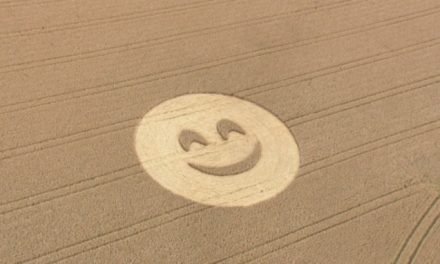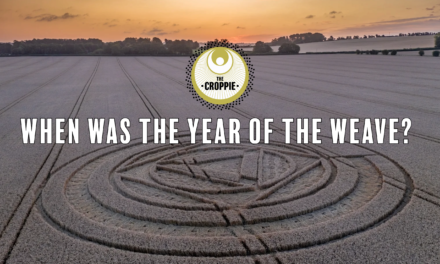
Are Today’s Crop Circles Smaller & Less Detailed?

Photograph by Steve Alexander
DETAILS
The Croppie recently ran some Q&A sessions through our Crop Circle Explorer Instagram account. One of the questions that came up again and again was this: why are crop circles seemingly smaller and less complex than they used to be?
A word of warning: for this answer we will assume the work is carried out by terrestrial beings rather than those from other worlds. Sorry if that upsets, but if so then start sending your questions into space. Anyhow…
First up, let’s look at the size issue. Is there any truth to the idea that circles are smaller?

Chicklade, Wiltshire, 1983. Small by today’s standards it was average for the time. Photograph by Roger Kingston.
Today’s crop circles are, by and large, significantly larger than those found in the early days of the phenomenon. Things changed with the appearance of those large pictograms at Alton Barnes and Stanton St Bernard in 1990. They set a precedent for enormity that would, every now and again, be matched or suprassed. The period between 1997 and 2009 certainly contained some large formations! Whilst the legendary Milk Hill ‘Galaxy’ stands alone at around 300m diameter, there were other formations of considerable size such as 1996’s ‘Triple Julia Set’.
So what size are contemporary circles? We can use Google Maps to gain a decent estimate of crop circle size based upon the spacing of tramlines (tractor paths) through the fields. Using this information we can confidently say the bulk of recent circles are somewhere in the region of 60m-80m in diameter. If you compare these to circles from the 1997 to 2009 period, today’s formations are low-to-mid-sized. Indeed, what we rarely experience these days are the huge circles.
So, yes, the average size of a crop circle has shrunk.

The Milk Hill ‘Galaxy’, approximately 300m in diameter. Photograph by Steve Alexander
Why is this occurring? The answer here is straightforward: more terrestrial aliens are leaving the fields than entering them. Circle making is a dying art and the number of participants is on the decline. We all supposedly ‘know’ that the ‘Galaxy’ was made by a team of twelve or thirteen people. The Croppie can state with confidence that it would be a big achievement for anyone to assemble a team half of that size at this present time.

Micheldever Station, 2022. Approximately 78m diameter. Photography by Nick Bull
The manpower issue is reflected in the perceived complexity level of the circles. Three people cannot produce what six people can, let alone twelve. But complexity isn’t everything. Some of the greatest circles haven’t necessarily been brimming with intricacies: think of the aforementioned ‘Julia Sets’ as classic examples; even the ‘Galaxy’ falls into this category. The likes of the Chilbolton circles of 2001 and the Crab Wood circle from 2002 represent a select batch of circles so involved as to be near anomalous. In other words, these are exceptions to the norm and very few others come close.
Value the crop circles we do have in the third decade of the 21st century. They may not be as mind-blowing in detail as the celebrated few we all remember. Similarly, they may not be as overwhelming in their scale as some from the past, but today’s circles are still objects of wonder.





